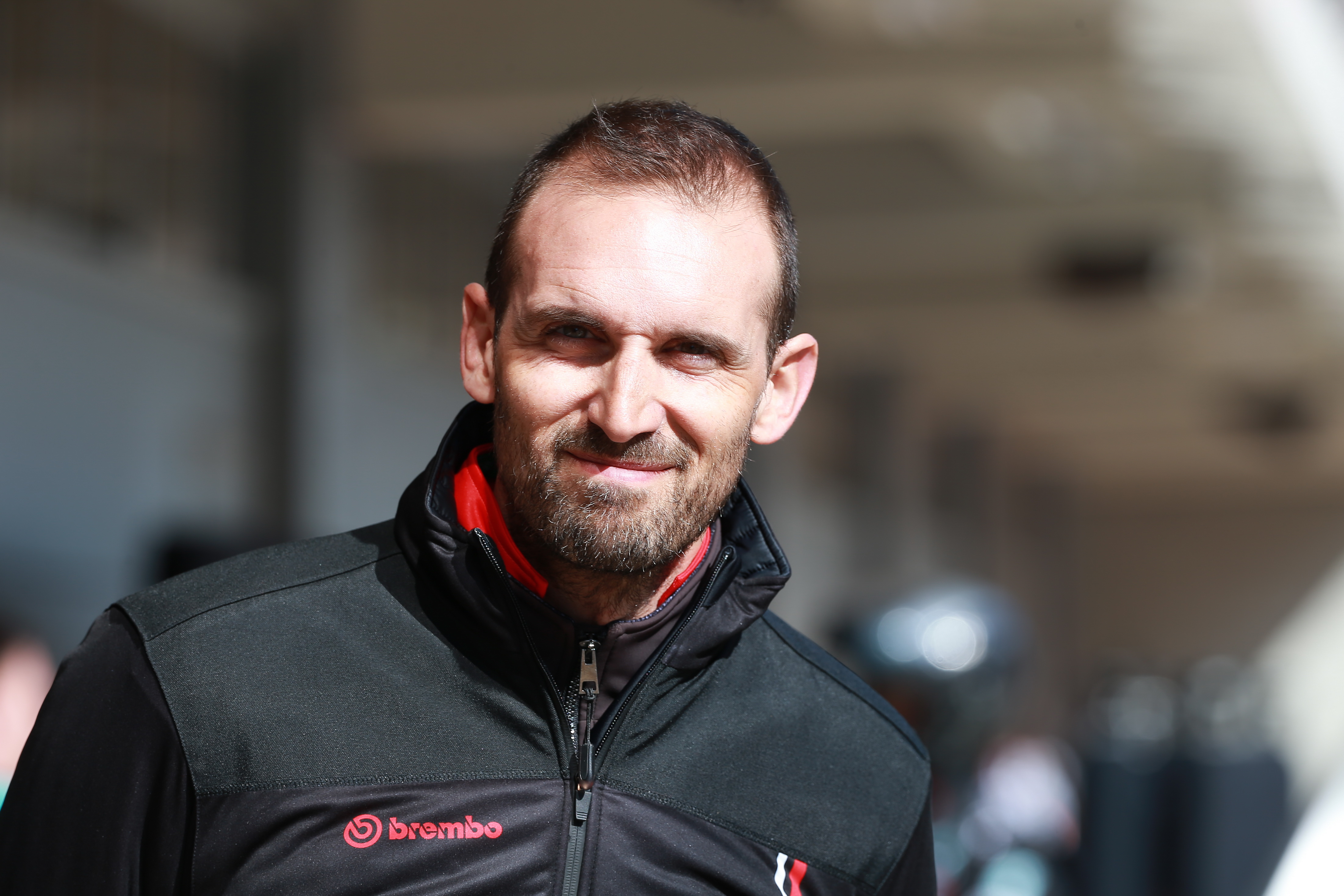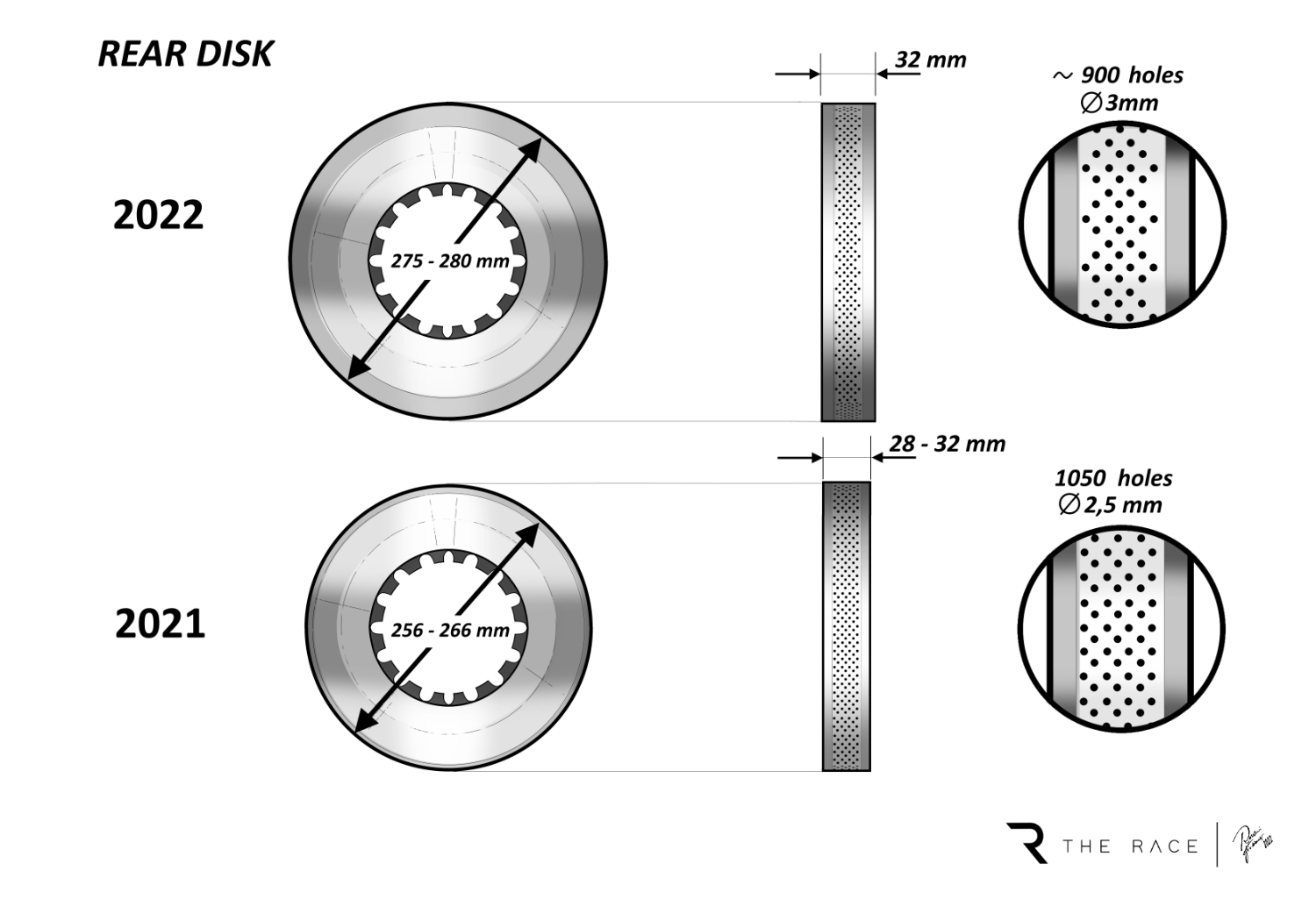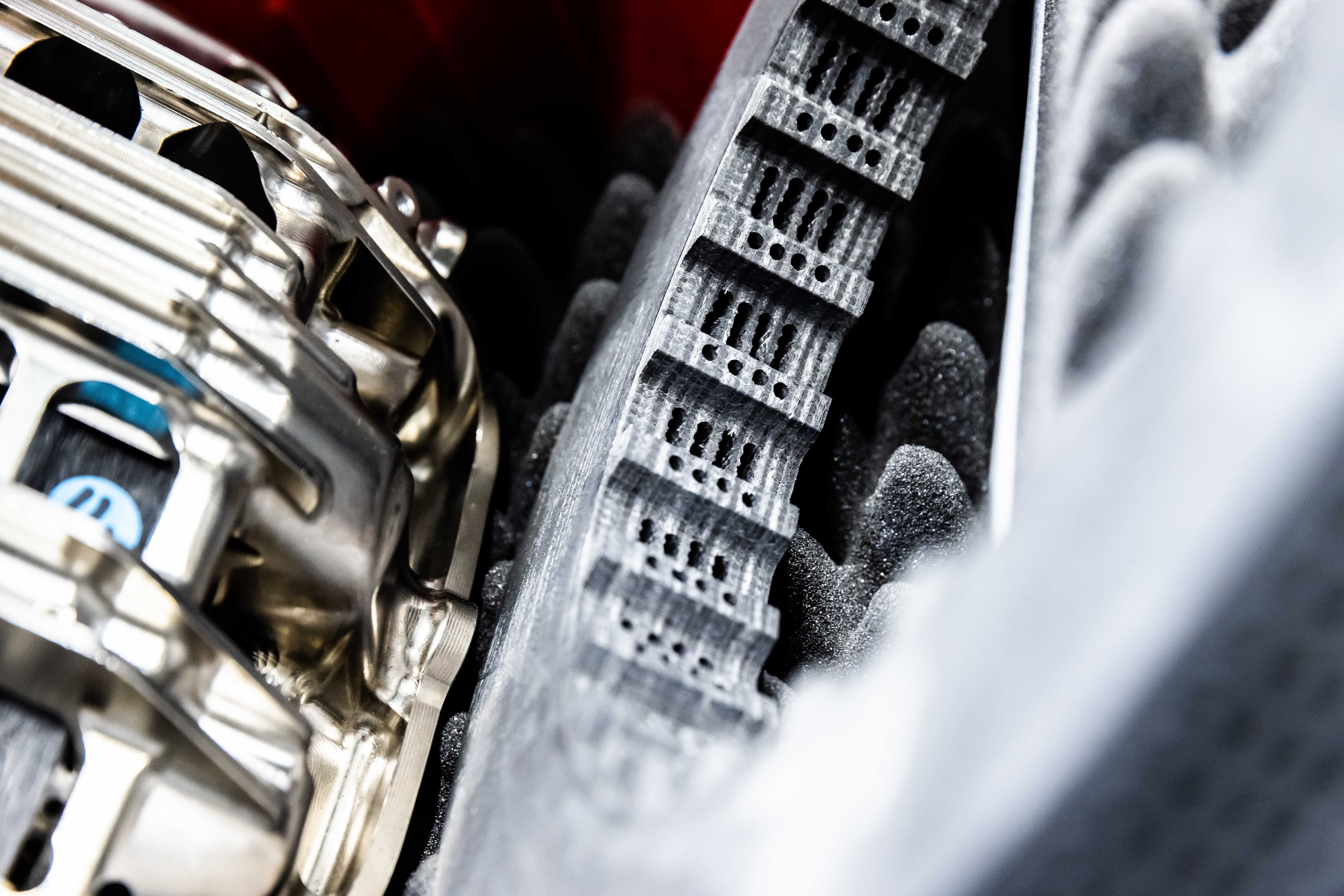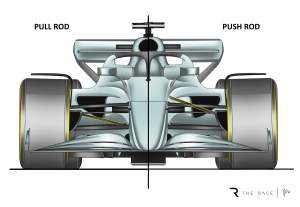Up Next

The switch to 18-inch wheelrims is one of the most eye-catching changes in the 2022 regulations, but they also shroud another significant change given the brakes inevitably have to change to match the increase in size.
Bigger wheels, therefore, mean bigger carbon brake discs – at one end of the car at least. Last year, the brake discs both at the front and rear had a maximum outside diameter of 278m. This year, that increases to 325-330mm at the front with the rear largely unchanged at 275-280mm. The maximum thickness remains the same at 32mm.
The brakes will also be operating in very different airflow regimes not only thanks to the wider aerodynamic changes, but also the introduction of standard-supply wheelcovers – or hubcaps and the spec brake ducts that will impact the cooling of the brake system.
And while mule cars have been running for tyre test purposes, the first time that these brakes will run on a truly representative F1 car will not be until the initial shakedowns on promotional days ahead of the first pre-season test. There are still some question marks hanging over how the cooling in particular will work given the lack of real-world running.
There are also changes to the cooling holes, which now have a minimum diameter of 3mm. This will reduce the number in the brake disc, which maxed out at 1500 last year and drops by around a third to “something like 1000” according to Brembo customer manager Andrea Algeri.
And there are other effects to the rule changes too.
“The rules now put a limitation of a minimum diameter for this hole of 3mm that is very different compared to the small holes that we have [in 2021],” Algeri (pictured below) told The Race.
“Keeping the same thickness and increasing the minimum diameter of the holes results in less holes in the disc, so less cooling. But the dimensions of the discs helps a bit in this sense.

“This change on the front axle means you need to design new calipers to fit the bigger discs. And when the caliper becomes bigger, you have to recover also with the master cylinders. It has to be redesigned in terms of dimension to follow the change.
“These are basically the hardware changes that we are going to see. For Brembo, it’s a total redesign of the system. It was not an easy job because you are collecting information coming from different customers that have different views of the change in the performance of the car.
“So every team has its own view of the problem and Brembo has to take some margin and consider the worst scenario.”
Understandably, Brembo will have engineered a margin into its brake systems for 2022 given the unknowns of the new cars. That means there will be room for improvement in terms of shaving off a little weight or being less conservative with cooling down the line – that was certainly the case the last time there was a major braking system change in 2014.
But given the amount of simulation work done, not to mention the vast knowledge of Brembo and other brake component suppliers in F1, teams can be confident the products will work well.
However, until the real cars run on track, the uncertainty remains. Considering the cars have changed so dramatically, with a 5.7% increase in minimum weight to take them from 752kg to 795kg, the behaviour will be very different.
“The car also changes from an aerodynamic point of view, so the performance of the car will be different,” said Alegri. “This also impacts the braking phase.

“What we are going to see will be a faster car [in a straight line], because the drag is reduced, but the downforce will be reduced so probably the speed in the corner will be slower. So that means starting from a higher speed and to reduce the speed in the corner a bit more.
“You have to dissipate more braking at the front – not too much, I would say +10% compared to this year – but the shift on the rear axle regarding the aero balance will change a lot the torque that you put on the brake on the rear but also the energy.
“At the rear, the dimension of the discs won’t change in terms of diameter but the thickness will be moved up to the limit allowed by the rules to use this thickness for the cooling.”
The original regulations had stated that teams could only use a single set of discs and pads – comprising four discs and eight pads – for each grand prix weekend.
That regulation was subsequently dropped but it will make little difference to Brembo’s approach. And this could be beneficial for teams given the cost cap.
“These limits have now been removed because some teams were against this rule because of safety factors,” said Algeri.
“Brembo is able to do many grands prix with a single disc. Our wear rate is very low and we were one of the suppliers who pushed this kind of change in the rules because obviously it was real challenge for us and we know that we have some margin on the competition. But it was removed.
“What we are going to see next year will be a reduction in the orders first because the bigger discs will be able to survive for more races. So even if it’s not mandatory, the teams are going to order less and use the material more, because there’s an impact in the budget cap.”
While the brake disc technology won’t change dramatically, the calipers are an area that is expected to change more. As Alegri explains, this is because “there is more space inside the wheel to play with strange shapes”.

This is why the calipers have greater scope for modification, while there is also a need for this given the concerns about cooling.
There’s also another change that has a significant impact on the brake suppliers, namely the introduction of open-source components. These are parts that teams must upload the design details for to a server accessible by all teams.
Effectively, it creates a category of components that teams can use wholesale or take and modify the design of. Given intellectual property concerns, not all details will be made available – however, the regulations stipulate that any elements of the design that cannot be shared for IP reasons must be made commercially available to any team to buy.
The OSC list includes the brake disc, disc bell and pad assembly, the calipers, the rear brake control system (brake by wire) and the master cylinder. In short, much of the braking system.
With the first real-world running of the brakes just around the corner, we’ve yet to see how the changes to the rules will impact F1 in this area
But while these parts are largely out of sight, their influence is significant. For example, with the cooling characteristics changing and the potential for parts running hotter, that could even have an impact on tyre management given heat transfer.
In the big picture of 2022, it’s just another change. But it’s another example of just how much the teams have had to get on top of, and the many hidden areas where there is the potential to get things right – or wrong.










